Echinoderms
The Pacific Northwest is home to over 300 species of echinoderm including sea stars, feather stars, brittle stars, sea urchins and sea cucumbers. All echinoderms have some manner of hard chalky skeleton within their skin but the shape and size vary greatly. For example sea urchins are extremely hard (well developed skeleton), whereas sea cucumbers are very soft (underdeveloped skeleton). Another unique characteristic of echinoderms is penta-radial (five-armed) symmetry. This symmetry is best illustrated in sea stars but can be seen in all echinoderms.
Due to the variability in skeletal structure some echinoderms are easier to preserve than others. The Nature house has an ever growing collection of echinoderms, so check back and watch our collection grow!
Sea Stars
Sea stars, like their names suggest, have a distinctive flattened body in the shape of a star. They are only found in marine environments, and are most commonly found clinging to rocks. In 2013 huge numbers of sea stars died all along the west coast. Researchers dubbed the disease Sea Star Wasting Disease (SSWD), and it’s cause is still not fully understood. SSWD caused the death of millions of sea stars belonging to over 20 different species. On Vancouver Island ocher sea stars (Pisaster ochraceus) and sunflower sea stars (Pycnopodia helianthoides) were among the species hardest hit, both species are incredibly important to our ecosystem. Ocher sea stars play a crucial role in regulating intertidal communities, especially in mussel beds. Sunflower sea stars protect kelp forests by keep sea urchins populations in check. As of 2020, sunflower sea stars have been declared critically endangered by the International Union for Conservation of Nature (IUCN), due to SSWD. The IUCN is yet to evaluate Ocher sea stars.
Sea stars are a common sight at just about any rocky shore line in BC. There are over 30 described species of sea stars in BC, but there are likely more to be discovered!
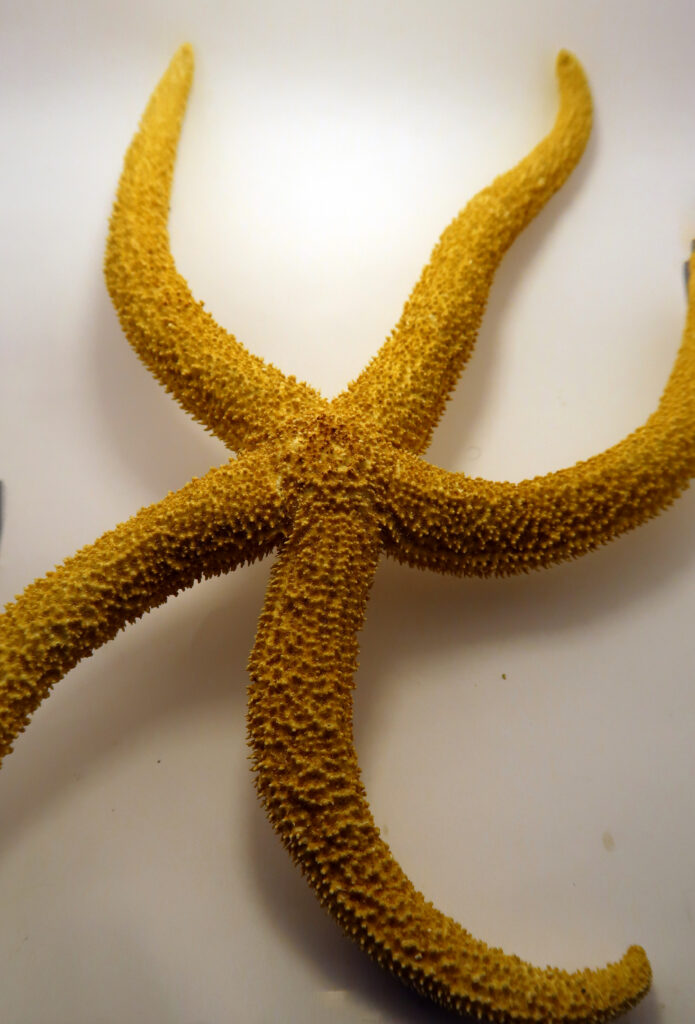
Mottled Sea Star (Top)
(Evasterias troschelii)
This species has disproportionally long rays, and can be found in a variety of colours including orange, purple, red & green.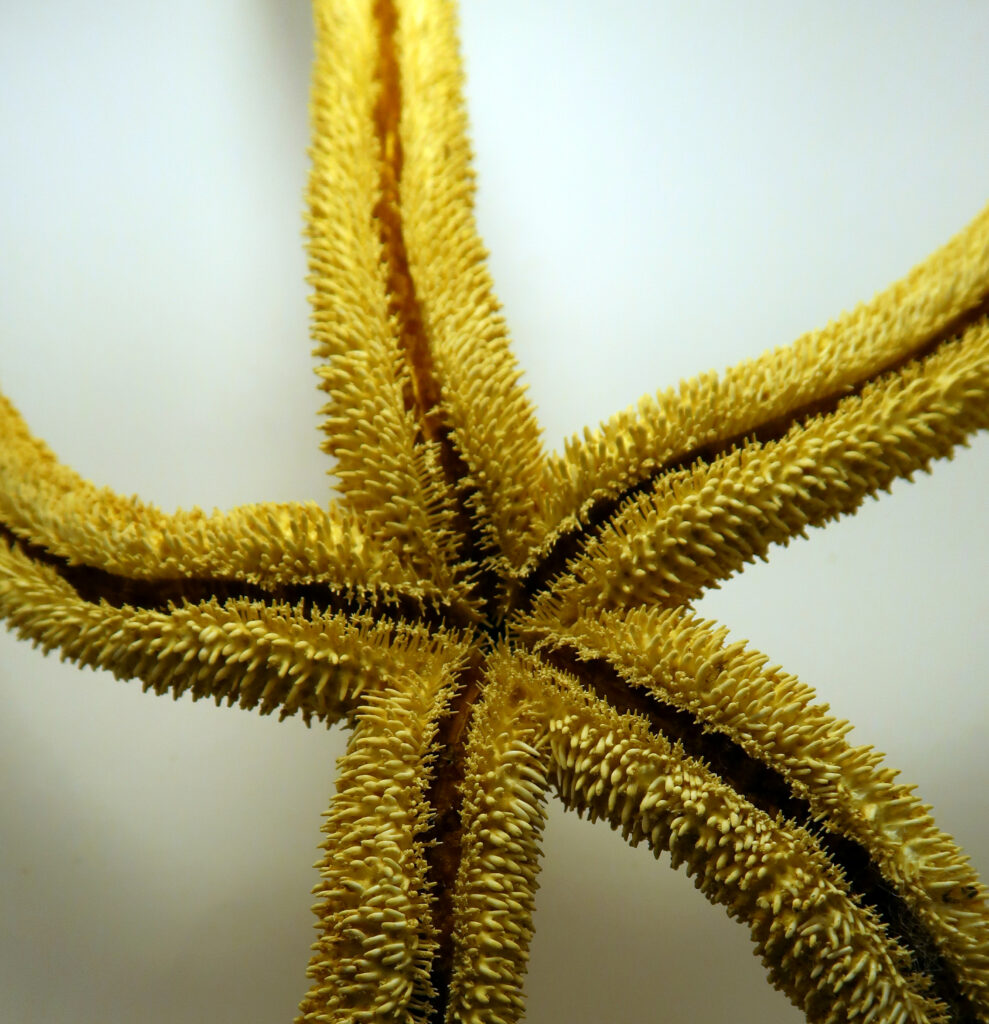
Mottled Sea Star (Underside)
(Evasterias troschelii)
Mottled sea stars predate mostly on mussels. They use the channels in their rays to move their prey towards the central mouth.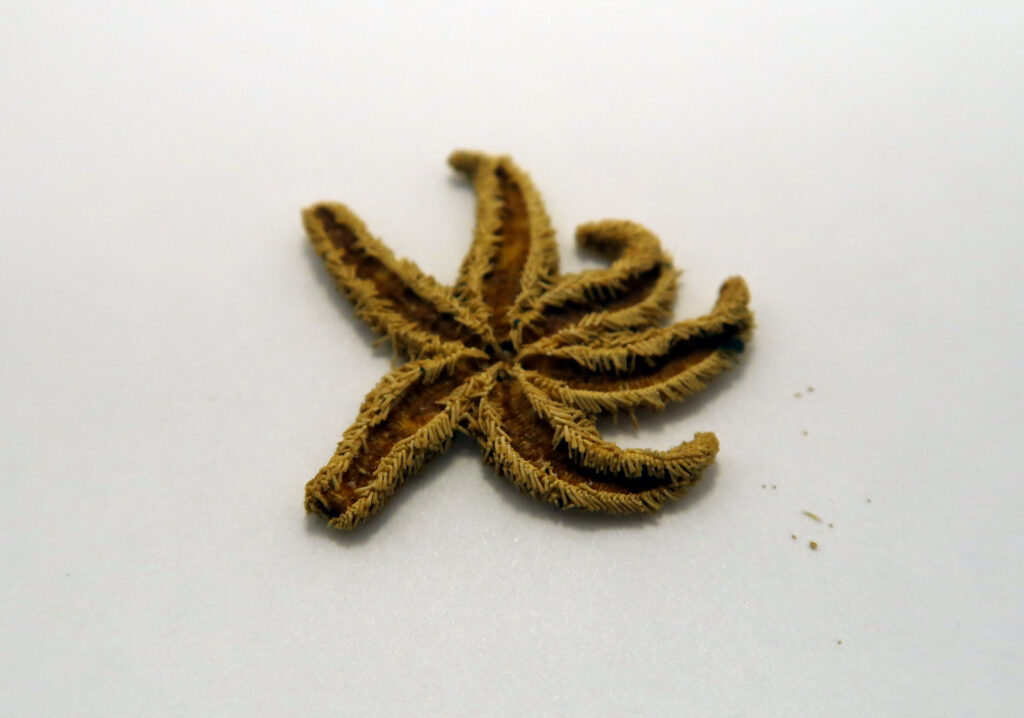
Six-armed Sea Star (Underside) (Leptasterias)
Even since the 1800’s Six-armed Sea Stars have been a problematic group to classify. The exact number of species in the group is still not known, but there are two, Leptasteria hexactis & Leptasteria aequalis that are generally agreed upon.
For more information check out Sea Stars of the PNW
Sea Urchins
You wouldn’t be wrong to call sea urchins the porcupines of the sea! In fact sea urchins got their name from the Old English word for spiny hedgehog. Sea urchins use their spines to deter predators, and some have stinging cells for further defense. Under all the spines sea urchins have a hard outer skeleton, called a test. The test is made up of ten fused plates, which encircle the sea urchin. Sea urchins use a structure called an Aristotle’s lantern to feed. It is comprised of five hard plates that form a small beak. They use this beak to eat algae.
Sand dollars are unique group of sea urchins. They have a flattened body plan and lack large spines. Sand dollars live primarily subtidal, either on top of or just beneath the sand. They have small spines on their underside which allow it to burrow through and slowly creep on top of the sand.
When sea urchins die their spines fall off and all that is left is the test and Aristotle’s lantern. There are six species of sea urchin commonly found in BC & they are easy to spot at low tide.
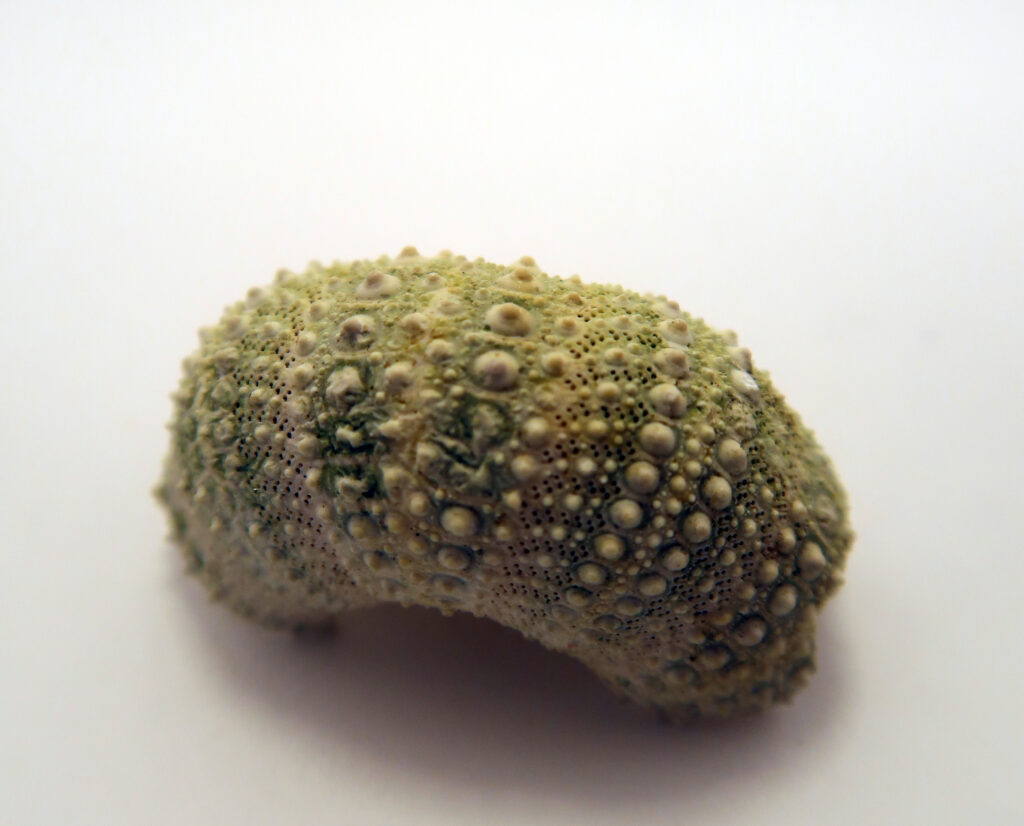
Green Sea Urchin test
(Strongylocentrotus droebachiensis)
The small bumps covering the test are where the spines use to sit. They fit like a ball and socket joint and can each rotate in their socket independently.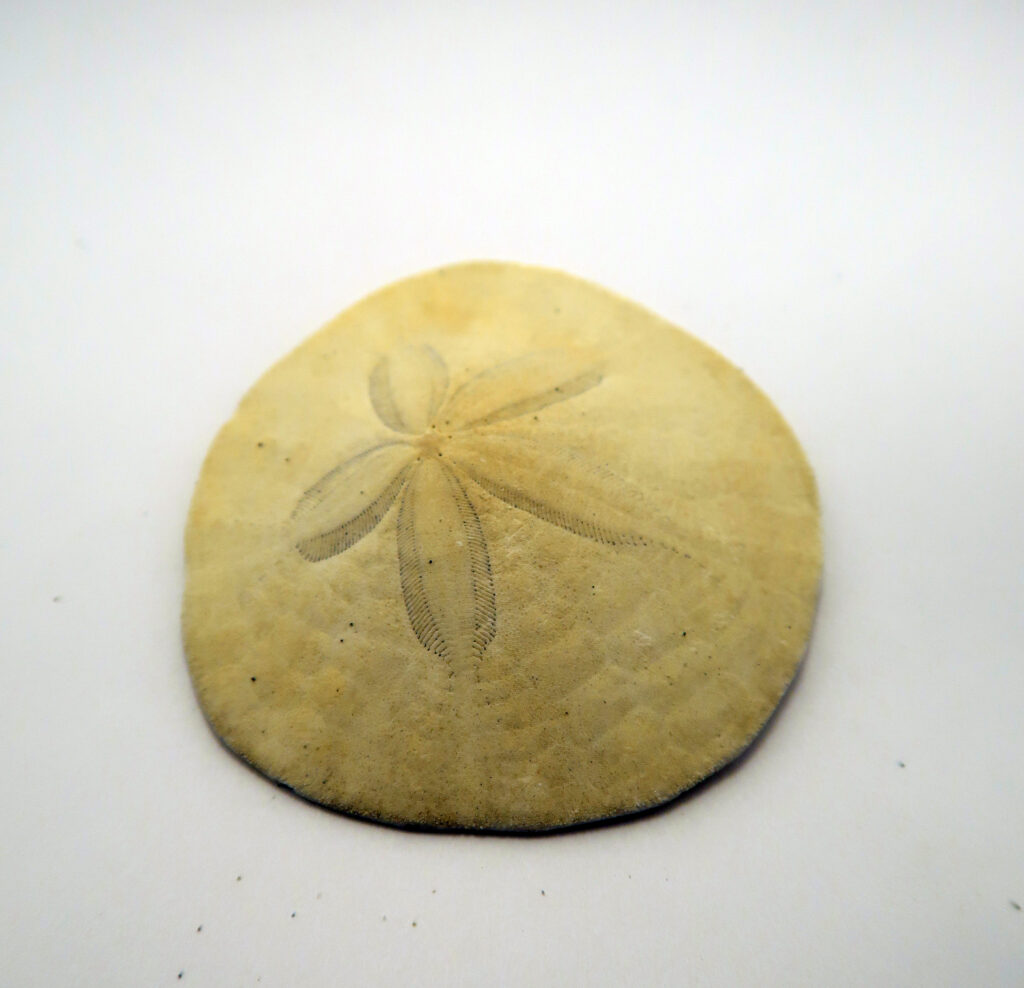
Eccentric Sand Dollar
(Dendraster excentricus)
When alive the Excentric Sand Dollar is a dark black/purple colour. If you are beach combing any dark coloured sand dollars should be returned to the ocean.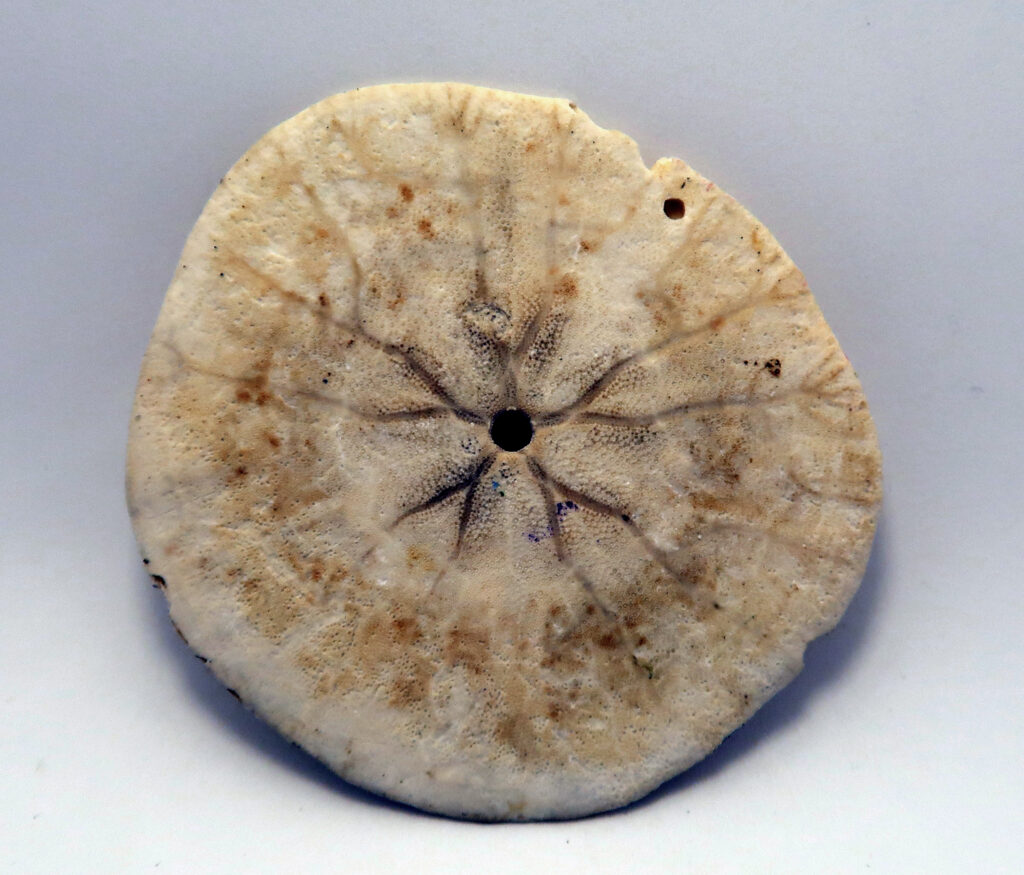
Eccentric Sand Dollar
(Dendraster excentricus)
The small hole on the underside is where their mouth is.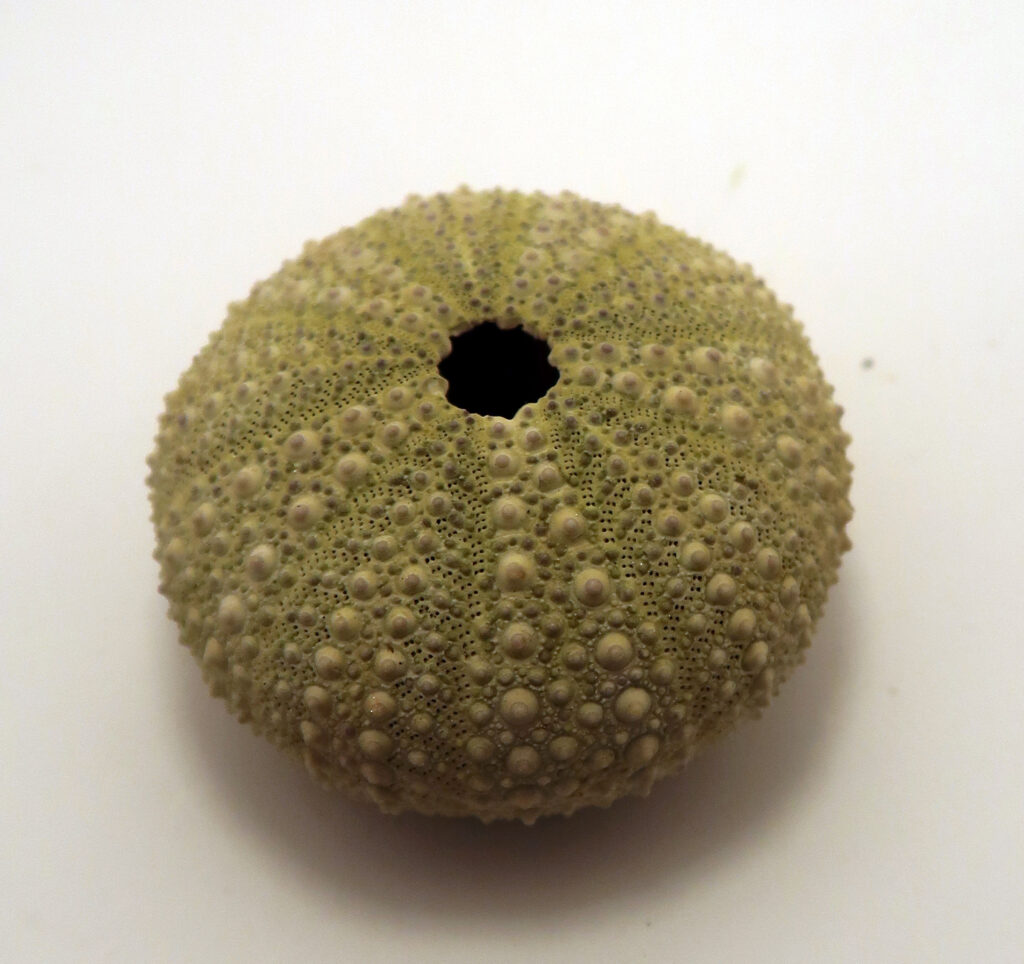
Green Sea Urchin test
(Strongylocentrotus droebachiensis)
Green urchins have fine spines and prefer sheltered areas.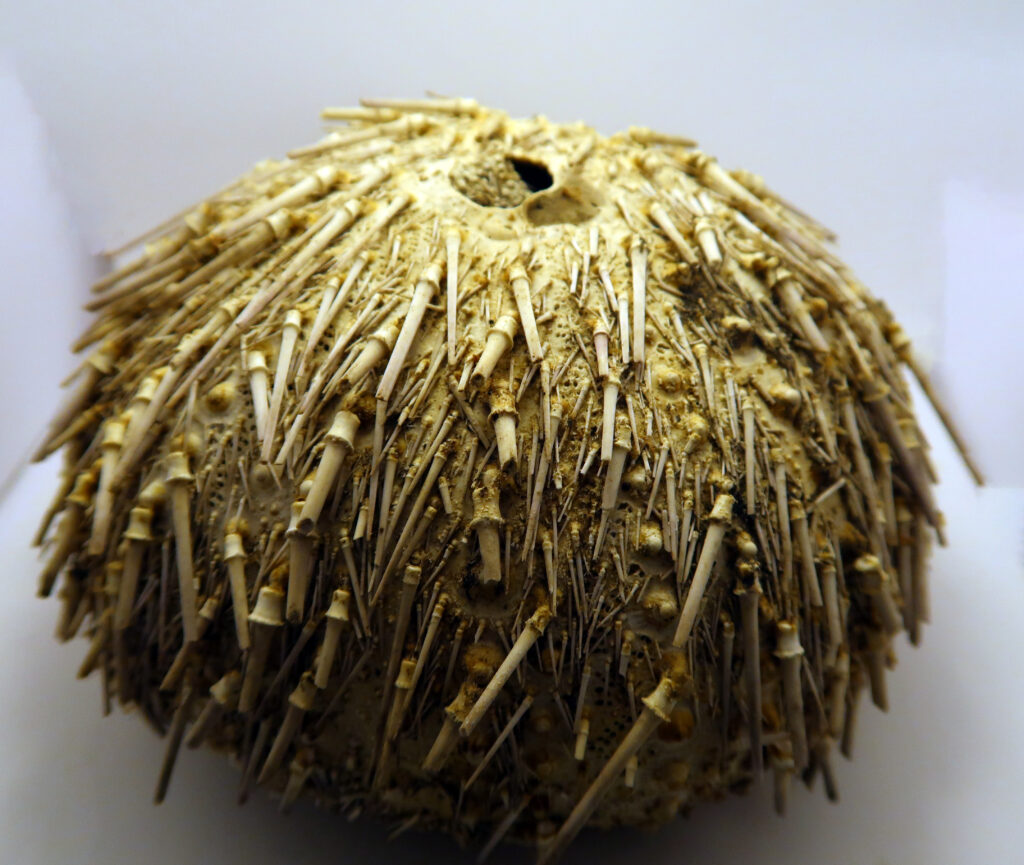
Red Sea Urchin test
(Strongylocentrotus franciscanus)
The largest of the 6 species found in BC, growing up to 12 in across.
For more information check out Tree of Life and Biodiversity of the Central Coast
Sea Cucumbers
Sea cucumbers look very different from other echinoderms, they have a soft body shaped similar to a cucumber. They also have small tentacle-like tube feet which they use for locomotion and feeding. Their soft bodies leave them vulnerable to predation, but they have a unique strategy to confuse and distract predators: they can eject their internal organs. This strategy allows the sea cucumber to escape and the organs will easily regrow.
Some sea cucumbers are free living and crawl across the ocean floor while others live buried in rocks and sediment. There are over 20 species of sea cucumber found in BC. Almost all live entirely subtidaly, but on occasion you can find them in the low intertidal.
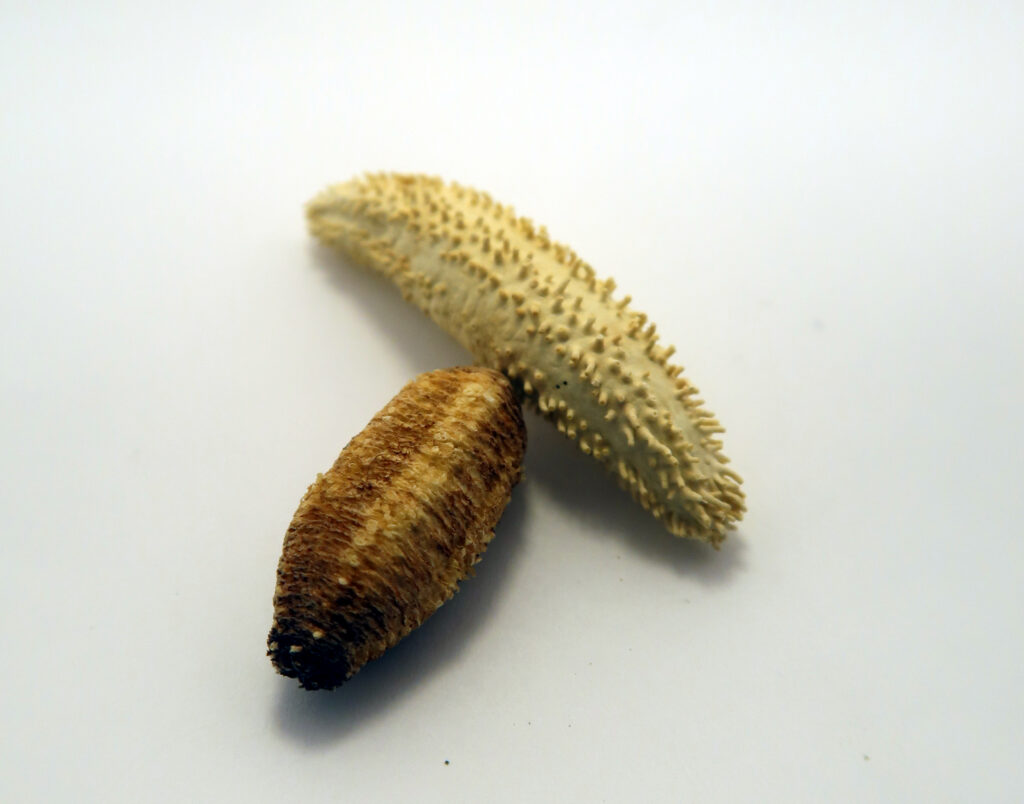
Burrowing sea cucumber (left) & free living sea cucumber (right)
Sea cucumbers can manipulate the soft spines along their bodies changing their shape using muscles which run the length of their body.
California sea cucumber live
(Parastichopus californicus)
Sea cucumber observed in Nanoose Bay, BC.
For more information check out the National Wildlife Federation


